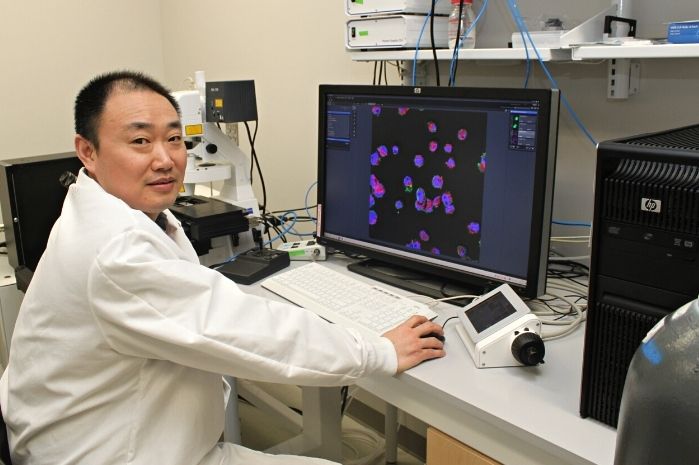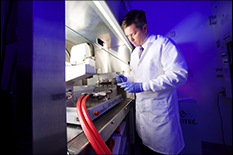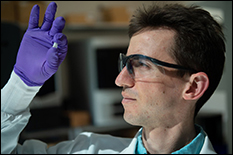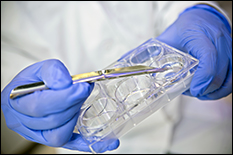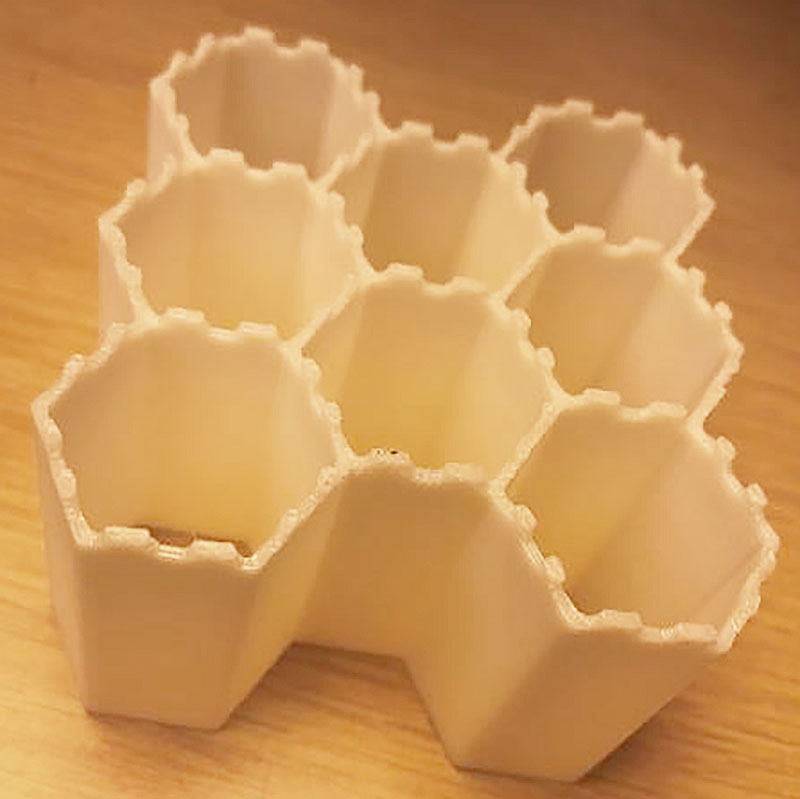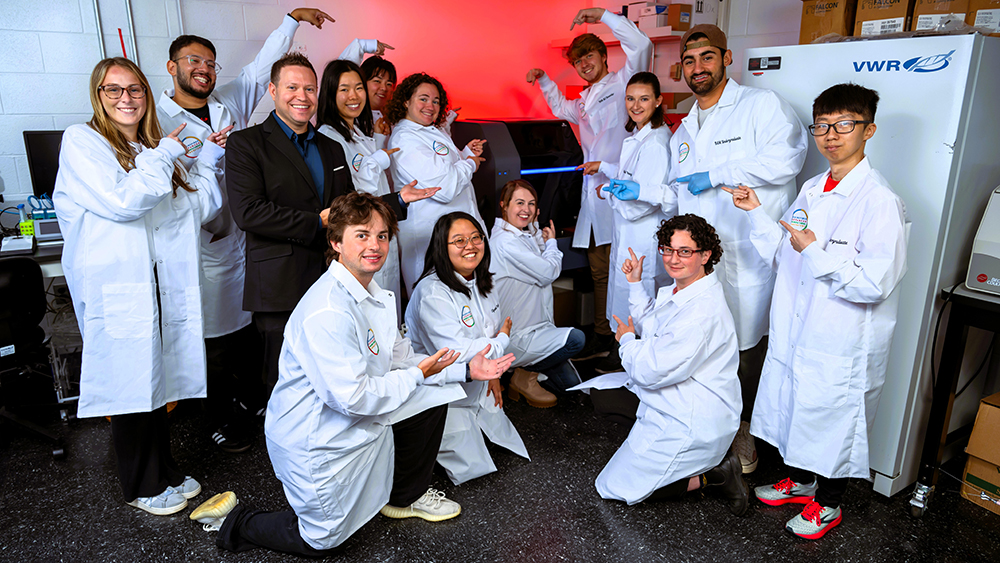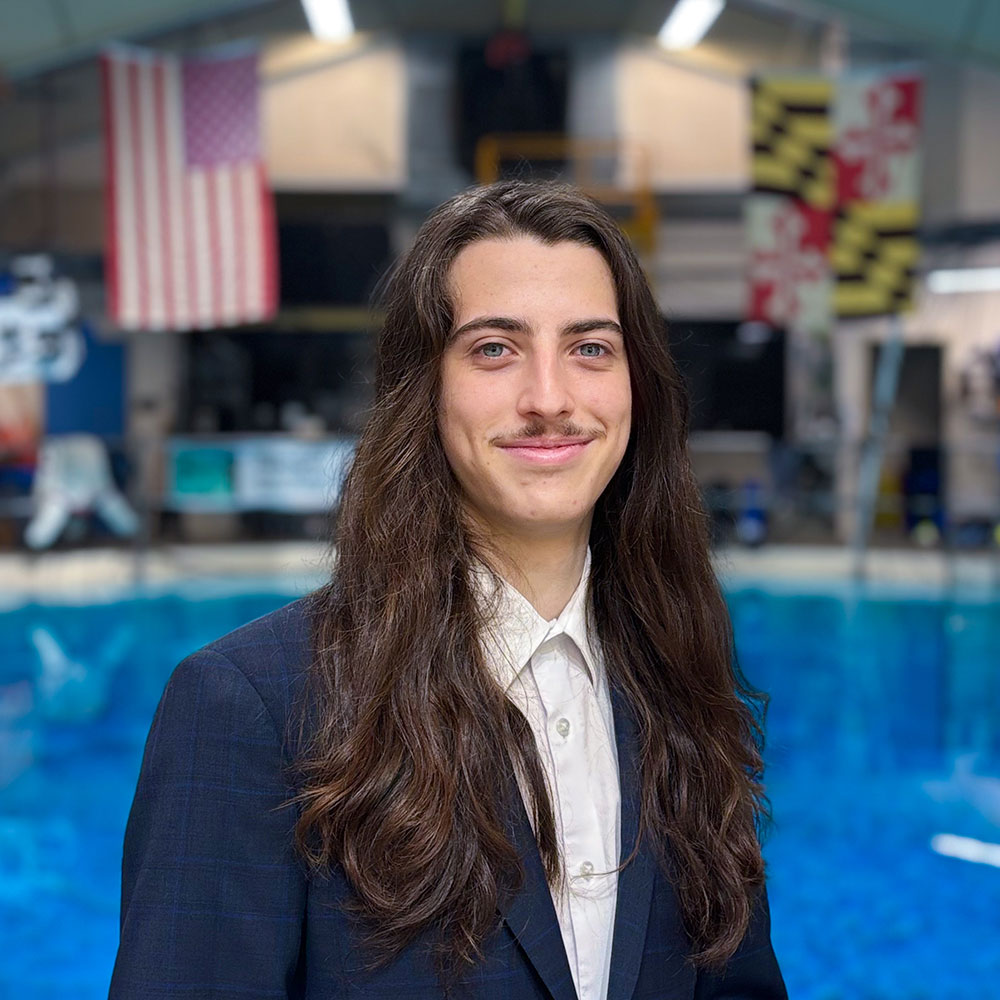News Story
4D Bioprinting Smart Constructs for the Heart
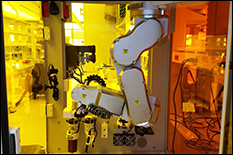
BioAssemblyBot printer, located in A. James Clark Hall at the University of Maryland.
Cardiovascular disease is the leading cause of mortality worldwide, accounting for nearly 18 million deaths each year, according to the World Health Organization. In recent years, scientists have looked to regenerative therapies – including those that use 3D-printed tissue – to repair damage done to the heart and restore cardiac function.
Thanks to advancements in 3D-printing technology, engineers have applied cutting-edge bioprinting techniques to create scaffolds and cardiac tissue that, once implanted, can quickly integrate with native tissues in the body. But, while 3D bioprinting can be used to create 3D structures made of living cells, the final product is static – it cannot grow or change in response to changes in its environment.
Conversely, in 4D bioprinting, time is the fourth dimension. Engineers apply 4D printing strategies to create constructs using biocompatible responsive materials or cells that can grow or even change functionalities over time and in response to their environment. This technology could be a game-changer for human health, particularly in pediatrics, where 4D-printed constructs could grow and change as children age, eliminating the need for future surgeries to replace tissues or scaffolds that fail to do the same.
But, 4D bioprinting technology is still very young. One of the critical challenges impacting the field is the lack of advanced 4D-printable bioinks – material used to produce engineered live tissue using printing technology – that not only meet the requirements of 3D bioprinting but also feature smart, dynamic capabilities to regulate cell behaviors and respond to changes in the environment wherever they’re implanted in the body.
Recognizing this, researchers at George Washington University (GWU) and the University of Maryland (UMD) are working together to shed new light on this burgeoning field. GWU Department of Mechanical and Aerospace Engineering Associate Professor Lijie Grace Zhang and UMD Fischell Department of Bioengineering Professor and Chair John Fisher were recently awarded a joint $550,000 grant from the National Science Foundation to investigate 4D bioprinting of smart constructs for cardiovascular study.
 Their main goal is to design novel and reprogrammable smart bioinks that can be used to create dynamic 4D-bioprinted constructs to repair and control the muscle cells that make up the heart and drive the pumping of blood throughout the body. The muscle cells they’re working with – human induced pluripotent stem cell (iPSC) derived cardiomyocytes – represent a promising stem cell source for cardiovascular regeneration.
Their main goal is to design novel and reprogrammable smart bioinks that can be used to create dynamic 4D-bioprinted constructs to repair and control the muscle cells that make up the heart and drive the pumping of blood throughout the body. The muscle cells they’re working with – human induced pluripotent stem cell (iPSC) derived cardiomyocytes – represent a promising stem cell source for cardiovascular regeneration.
In this study, the bioinks, and the 4D structures they’re used to create, are considered “reprogrammable” because they can be precisely controlled by external stimuli – in this case, by light – to contract and elongate on command in the same way that native heart muscle cells do with each and every heartbeat.
The research duo will use long-wavelength near-infrared (NIR) light to serve as the stimulus that prompts the 4D bioprinted structures into action. Unlike ultraviolet or visible light, long-wavelength NIR light could efficiently penetrate the bioprinted structures without causing harm to surrounding cells.
"4D bioprinting is at the frontier of the field of bioprinting," Zhang said. "This collaborative research will expand our fundamental understanding of iPSC cardiomyocyte development in a dynamic microenvironment for cardiac applications. We are looking forward to a fruitful collaboration between our labs in the coming years."
"We are thrilled to work with Dr. Zhang and her lab to continue to develop novel bioinks for 3D- and 4D- printing," Fisher said. "We are confident that the collaborative research team will continue to bring to light untapped printing strategies, particularly in regards to stem cell biology."
Moving forward, Zhang and Fisher hope to apply their 4D bioprinting technique to further study of the fundamental interactions between 4D structures and cardiomyocyte behaviors.
“The very concept of 4D bioprinting is so new that it opens up a realm of possibilities in tissue engineering that few had ever imagined,” Fisher said. “While scientists and engineers have a lot of ground to cover, 4D bioprinted tissue could one day change how we treat pediatric heart disease, or even pave the way to alternatives to donor organs.”
At GWU, Zhang leads the Bioengineering Laboratory for Nanomedicine and Tissue Engineering. At UMD, Fisher leads the Center for Engineering Complex Tissues, a joint research collaboration between UMD, Rice University, and the Wake Forest Institute for Regenerative Medicine. Fisher is also the principal investigator of the Tissue Engineering and Biomaterials Lab, housed within the UMD Fischell Department of Bioengineering.
Published October 1, 2019
